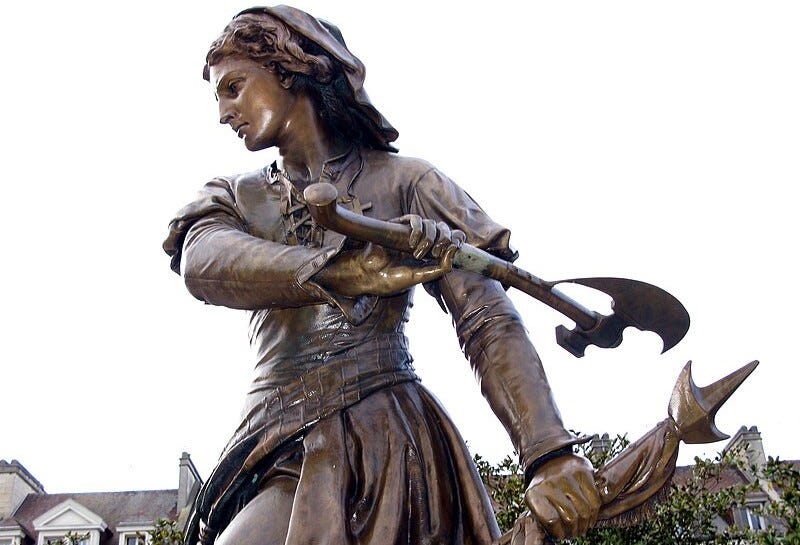Jeanne Hachette Against Charles The Bold
Making the myth of France

When Charles I Duke of Burgundy, known to history as Charles the Bold, arrived under the walls of Roye in 1472, he “had never had such a fine army,” Philippe de Commines wrote in his memoir on The Reign of Louis XI 1461-83. So intimidated was the garrison by this formidable host of 80,0000 that the next morning, some of the archers on the walls began climbing or jumping down to surrender. He accepted the town’s capitulation the next day, and even graciously allowed the French king’s men-at-arms to leave with part of their baggage, such was his chivalry. Of course, his army had destroyed every town on their way to Roye hoping to incentivize this very response. Pour encourager les autres, as the French say.
Their next stop was Normandy, but Charles the Bold never made it. For “passing close to Beauvais, with the lord of Cordes leading the vanguard, he attacked it.” Perhaps Charles still smarted from the insult of that town serving as a center of resistance against him in his previous invasion of northern France. His attack now was hasty, capturing only a suburb outside the walls, for “his ladders were too short and he did not have enough of them.” Furthermore, “he had two cannons with which two shots made a great hole in the gate, and if he had had enough stones to continue firing he would certainly have captured the town.”
“But he had not come prepared or equipped for such an eventuality,” de Commines writes. During the fight for the gate, “some of the garrison took it into their heads to bring lighted faggots to throw in the faces of those who were trying to break the gate down. They put so many there that the gate caught alight and the assailants had to retire until the fire had been put out.” Charles pulled back and prepared for a siege. When he left left after “three fruitless weeks,” in the words of Ruth Putnam, his army was broken along with his nearly-perfect winning streak. Thereafter, Charles the Bold made increasingly bad decisions and suffered embarrassing defeats until his own soldiers finally ended him. He had met a woman, they say — a mighty fury of a French woman — and he was never the same after that.
Keep reading with a 7-day free trial
Subscribe to Polemology Positions to keep reading this post and get 7 days of free access to the full post archives.

